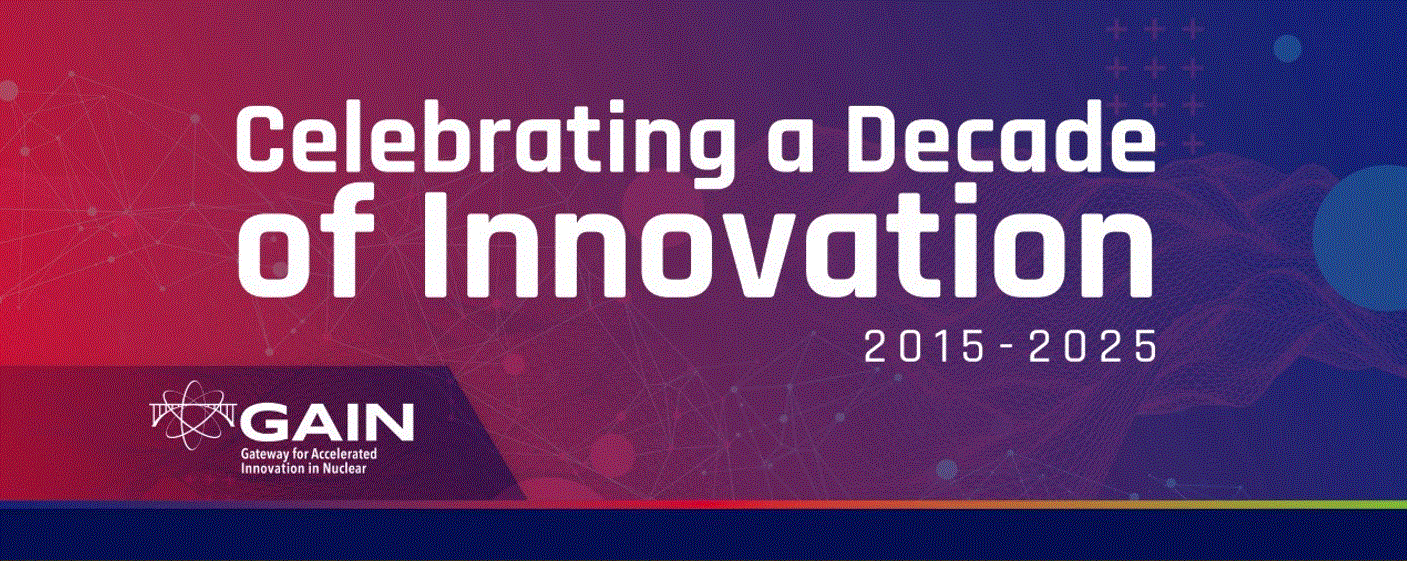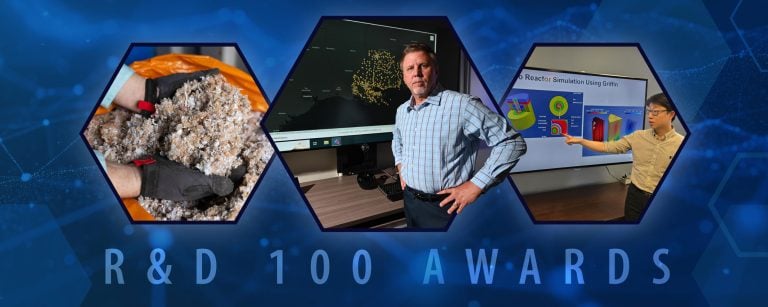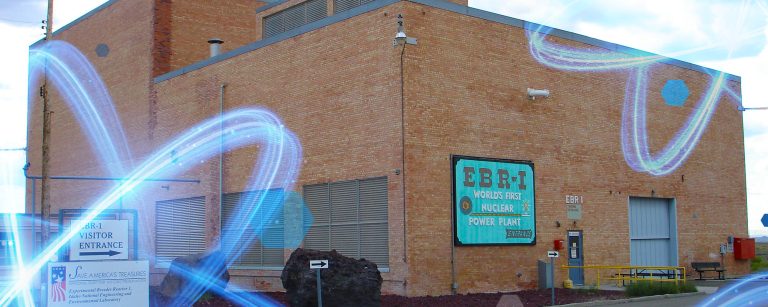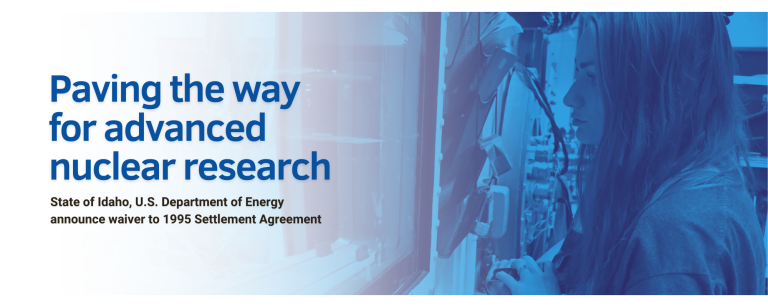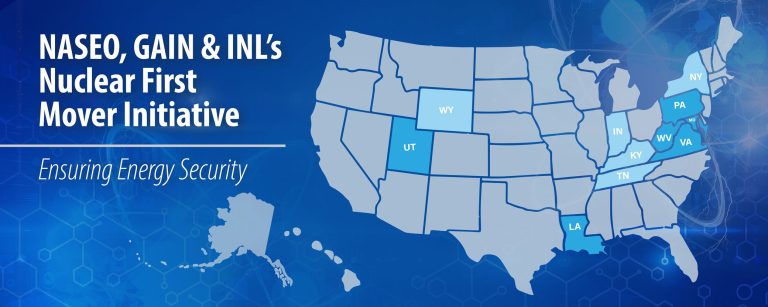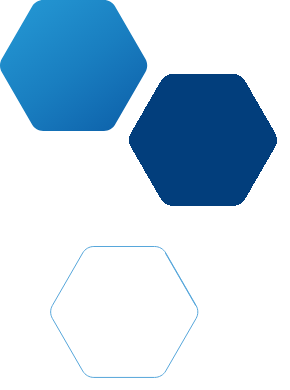Ten years ago, the U.S. Department of Energy announced a landmark initiative to boost innovation in nuclear energy development by using the technical expertise of the nation’s energy laboratories. The department established Gateway for Accelerated Innovation in Nuclear (GAIN) to act as the matchmaker that connects nuclear innovators to lab experts and capabilities.
Lori Braase watched from the beginning as GAIN evolved into an incentive program unlike any other public-private partnership.
“The secret sauce is we had a lot more autonomy from the beginning,” said Braase, senior advisor for GAIN and industry engagement executive for the Idaho National Laboratory (INL). “Today it’s as important as ever.”
Whether it’s performing assessments of reactor systems, testing sensors, advancing modeling and simulation capabilities or pioneering experiments with molten salts, GAIN’s Nuclear Energy Voucher Program has empowered important advancements in nuclear technology. GAIN has awarded 108 vouchers, totaling $38.6 million in funding, resulting in 65 completed projects.
DOE’s Office of Nuclear Energy (NE) awards the vouchers four times a year to applicants looking to advance their nuclear energy technologies. Voucher funding (up to $500,000) goes to one of the 17 national laboratories to use their one-of-a-kind infrastructure and capabilities. Applicants work with the lab under a Cooperative Research and Development Agreement and are responsible for a 20% cost-share, which can be an in-kind contribution.
“GAIN acts as a front door to the national labs,” said Chris Lohse, innovation and technology manager for GAIN. “Vouchers are intended to help solve the company’s problems so they can move toward commercialization. Vouchers also help develop relationships between the labs and the companies for future collaboration.”
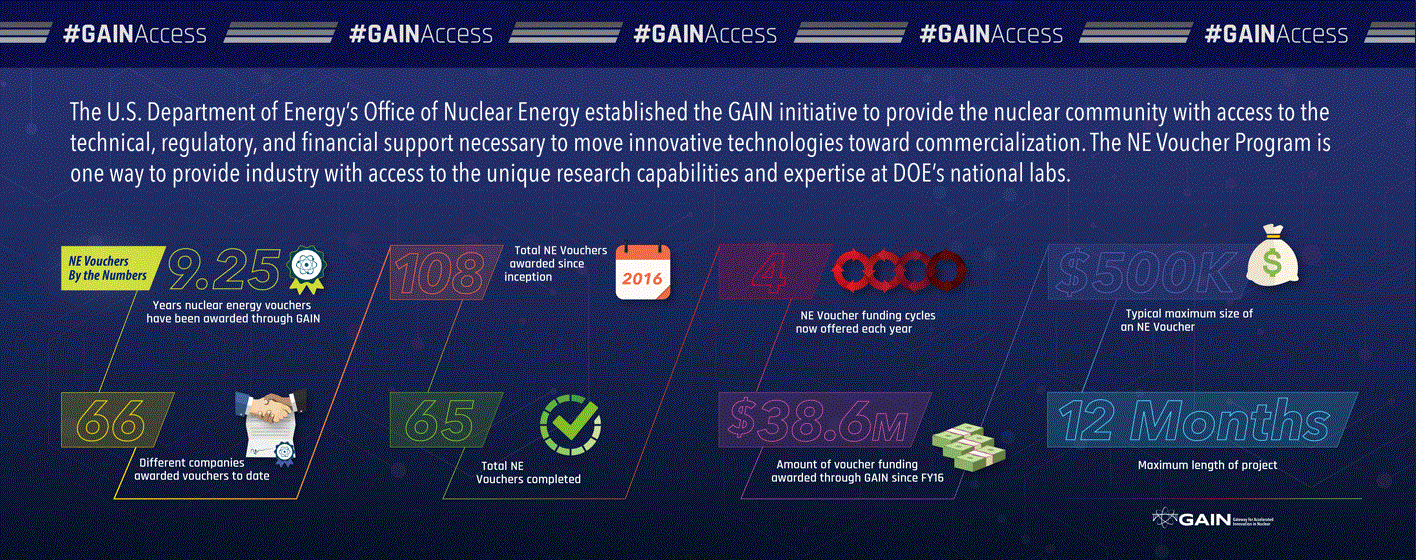
Bridging the gap
GAIN was created in 2015 to “provide the nuclear community with a single point of access to the broad range of capabilities — people, facilities, materials and data — across the DOE complex and its national laboratory capabilities.”
INL serves as the GAIN integrator for NE for a reason, said Jess Gehin, associate laboratory director for Nuclear Science and Technology at INL. “INL’s significant experience in leading nuclear energy R&D programs made it the ideal choice to head the GAIN initiative and work with other national laboratories on GAIN’s mission.”
Alice Caponiti, deputy assistant secretary of strategic crosscuts at NE, praised GAIN, with its unique focus of partnerships, for emerging at exactly the right time for the nuclear industry. “This model for building partnerships and accelerating innovation within a complex and rich laboratory ecosystem has been so successful that other energy sectors have sought to replicate it. Imitation is the best form of flattery”
John Jackson, technical director of NE’s Microreactor Program, played a significant role in the program’s development as GAIN’s former industry lead. “A lot of people want a way to access the national lab complex through a research and development process that isn’t overly burdensome,” he said.
The nuclear industry finds the voucher process effective. “Approaching a national lab complex can be daunting,” said Jim Fornof, vice president of program management at Lightbridge Corporation. The company has worked with INL since receiving a voucher in 2019 to help develop its advanced metallic fuel for the existing reactor fleet and advanced small modular reactor designs.
“We needed help, and INL had the capabilities, but we didn’t know how to approach it,” Fornof said. “The GAIN voucher helped develop our experiment design and positioned us to execute it going forward. We couldn’t have done that by just walking through the door. It primed the pump and provided a road map for our future efforts.”
Adapting to new needs
Although most of the earlier voucher recipients were developers seeking modeling and simulation help, material properties or fuel fabrication, recent trends show a shift in applicants’ needs. Now, end users like data centers and communities are seeking support for site assessments.
“We’re seeing a greater diversity of voucher applications,” said GAIN Senior Advisor Hussein Khalil, director of Argonne National Laboratory’s Nuclear Engineering Research Program, “not just from nuclear technology developers or suppliers, but also electric utilities, petrochemical companies and companies interested in utilizing nuclear energy to advance a variety of applications such as medical isotope production, maritime propulsion and mining of rare earth elements. The labs can help such companies with technical evaluations of their ideas and resolution of specific technology challenges they identify.”
GAIN adapts to the industry’s changing needs. “The voucher program has been responsive to adapting and evolving over time,” Jackson said. “Simplicity and speed are characteristics of its long-lived success.”
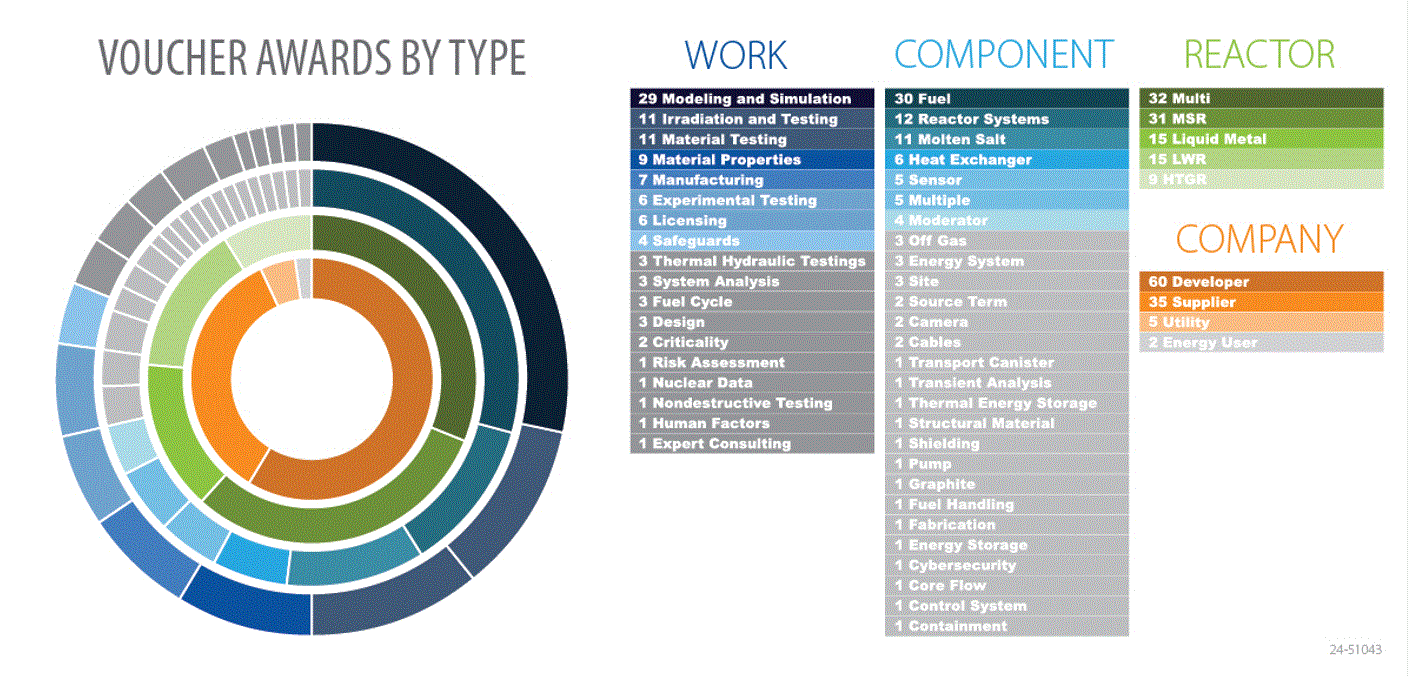
Secret to a successful voucher
Besides INL, experts from national labs like Oak Ridge, Argonne, Pacific Northwest, Sandia and Los Alamos form a review team that, Jackson said, “is still the heart and soul of the voucher program.”
The application process is simple by design. It requires a brief statement of work that includes:
· A clear need and justification for laboratory support.
· A well-defined work scope.
· A plan for how the information will be used.
Projects must be completed within a year, which demands a focused objective. If an application is denied, the review team provides feedback, and the applicant can resubmit the application. This guidance document provides tips for writing a successful GAIN voucher request.
“One of the major strengths of GAIN, and in particular the voucher program, has been the credibility that we have developed with the U.S. industry,” said GAIN Deputy Director Andy Worrall, the director of Nuclear Energy Programs at Oak Ridge National Laboratory. “I believe this has been due to the transparency and consistency in the review process and the associated awards. We evaluate each proposal on its merit, with awards made irrespective of technical area, size of company or the longevity of the company.”
About Gateway for Accelerated Innovation in Nuclear (GAIN)
The U.S. Department of Energy’s Office of Nuclear Energy established GAIN to provide the nuclear community with access to the technical, regulatory, and financial support necessary to move innovative nuclear energy technologies toward commercialization while ensuring the continued safe, reliable, and economic operation of the existing nuclear fleet. For more information, visit https://gain.inl.gov. Follow us on social media: X, Facebook, Instagram and LinkedIn.

